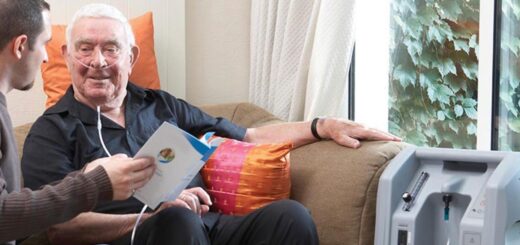Home Oxygen Machine vs Oxygen Tank: Which Is Better for Daily Use?
1. Understanding the Basics of Oxygen Therapy
Oxygen therapy provides supplemental oxygen to individuals whose lungs cannot deliver sufficient oxygen to their bloodstream. It is commonly prescribed for conditions such as COPD, pulmonary fibrosis, heart failure, and other chronic respiratory diseases. Two main oxygen delivery options exist for home use — oxygen machines (concentrators) and oxygen tanks (cylinders).
2. What Are Oxygen Tanks for Breathing at Home?
Oxygen tanks for breathing at home store medical-grade oxygen under high pressure within metal cylinders. They are available in various sizes and are refilled or exchanged by a medical gas supplier. Oxygen flows from the tank through a regulator and tubing to the user, providing continuous or adjustable flow rates depending on the prescription. These tanks are simple to use and ideal for patients who need a consistent oxygen supply without relying on electricity.
3. What Is a Home Oxygen Machine (Oxygen Concentrator)?
A home oxygen concentrator works differently from a tank. Instead of storing oxygen, it draws in room air, removes nitrogen through filters, and delivers purified oxygen directly to the user. As long as electricity is available, the concentrator produces an unlimited oxygen supply — no refills or deliveries needed. Portable models, powered by rechargeable batteries, also exist for users who want mobility and independence.
4. Comparing Oxygen Purity and Flow Rate
Both systems provide medically safe oxygen concentrations, but there are differences. Oxygen concentrators typically deliver 87–95% oxygen purity, while tanks provide nearly 100% oxygen. However, concentrators offer steady and continuous flow rates, usually between 1–10 liters per minute, making them sufficient for most long-term therapy needs. Tanks are better for short-term or emergency use when higher purity is required. You may like to visit https://www.health.gov.au/topics/aged-care/providing-aged-care-services/funding-for-aged-care-service-providers/oxygen-supplement-for-aged-care?language=en to get more about oxygen supplement for aged care.
5. Portability and Lifestyle Considerations
When it comes to mobility, portable oxygen concentrators are more convenient for active users. They are lightweight, battery-powered, and designed for travel, including air flights. In contrast, oxygen tanks can be heavy and bulky, especially larger cylinders meant for extended use. Smaller portable tanks are available, but they require regular refilling, which limits independence.
6. Maintenance and Ease of Use
Oxygen machines require basic maintenance, such as cleaning filters and replacing cannulas or tubing regularly. On the other hand, oxygen tanks need professional refilling, regulator checks, and careful handling due to high-pressure contents. For home users who prefer a low-maintenance option, concentrators often provide more convenience and safety.
7. Safety Considerations for Home Use
Safety plays a vital role when deciding between these systems. Oxygen concentrators are generally safer since they do not store compressed gas. Oxygen tanks, however, pose risks if mishandled or stored near heat sources due to pressurization. Both should be kept away from open flames, smoking areas, or direct sunlight to prevent fire hazards.

8. Cost Comparison: Short-Term vs Long-Term Value
Oxygen tanks usually have a lower upfront cost but require ongoing refill and delivery expenses. In contrast, oxygen concentrators involve a higher initial investment but save money over time by eliminating refills. For patients on long-term oxygen therapy, concentrators tend to be more economical, while tanks are suitable for temporary or backup use.
9. Which Option Is More Suitable for Daily Use?
For daily and continuous use, most patients prefer home oxygen machines due to their convenience, unlimited oxygen supply, and reduced dependency on deliveries. Tanks remain valuable for short-term recovery, emergencies, or travel backup. The choice ultimately depends on lifestyle, mobility, and medical prescription — your doctor will recommend the best option based on your oxygen flow requirements and health condition.
10. Final Verdict: Choosing the Right Oxygen System for Your Needs
Both oxygen tanks and concentrators play important roles in respiratory care. If you prioritize portability and independence, a portable concentrator is ideal. If you need a high concentration of oxygen for short periods or want a backup source during power outages, oxygen tanks are a solid choice. Consulting your pulmonologist ensures that your selected oxygen delivery system aligns with your specific therapeutic goals and safety requirements.
More to Read : How Much Does Oxygen Cost for Home Therapy in Australia?
